Is an Online Bachelor’s Degree in Art Worth It?

Find your degree
The pursuit of a bachelor’s degree in art is considered the traditional route for aspiring artists. However, there seems to be some debate on whether an online art degree is valuable due to technology and online education. Many people ask: “Is an online art college truly worth the investment of time and money?” Let’s look at the aspects of online art degrees and their advantages. We will also examine job prospects and career opportunities for graduates of online art schools.
The Demand for Online Education in The Art Field
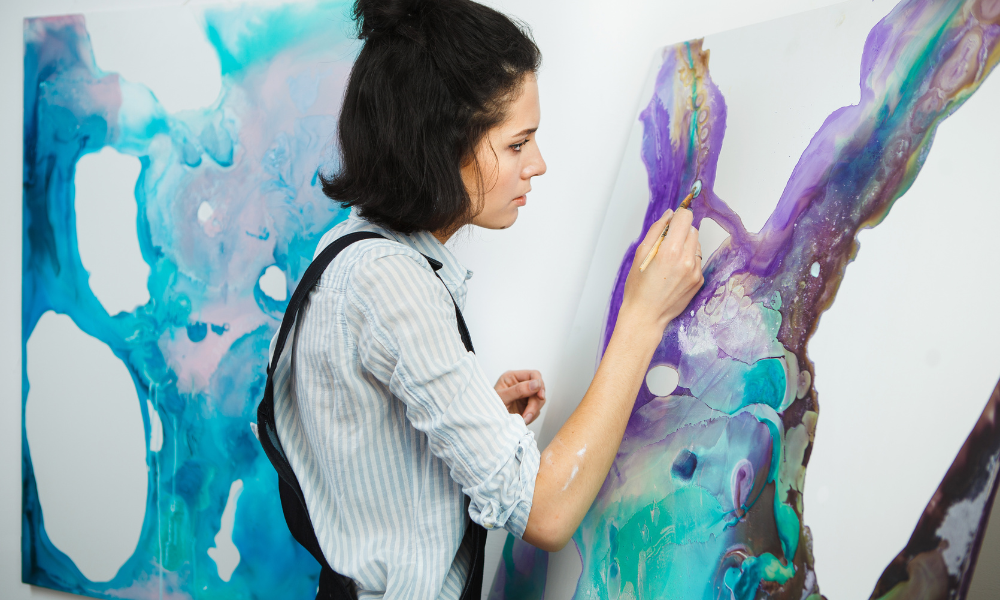
Many people choose to get a bachelor’s degree in art online because it’s convenient and flexible. Online art degrees are an excellent way to continue your education and advance your career. According to a report by The Online Learning Consortium, over 30% of students in higher education are now taking at least one online course. This includes online students pursuing an art degree.
The demand for online education in the art field has grown in recent years. Because of this, aspiring artists can pursue online courses without sacrificing quality.
Artistic professions have also embraced online education. And many reputable institutions offer comprehensive and accredited online art programs. Online art classes will provide online students with the opportunity to develop their artistic skills. They also gain industry knowledge, and network with professionals in the field.
Online art degrees often include practical components as well. These include virtual art galleries, collaborative projects, and online portfolios. These opportunities prepare online students for the ever-evolving digital realm of art.
As the demand for online education continues to rise, employers are recognizing the value of an art degree online. And most companies now consider online art degrees on par with traditional degrees.
Advantages of Pursuing an Online Art Degree
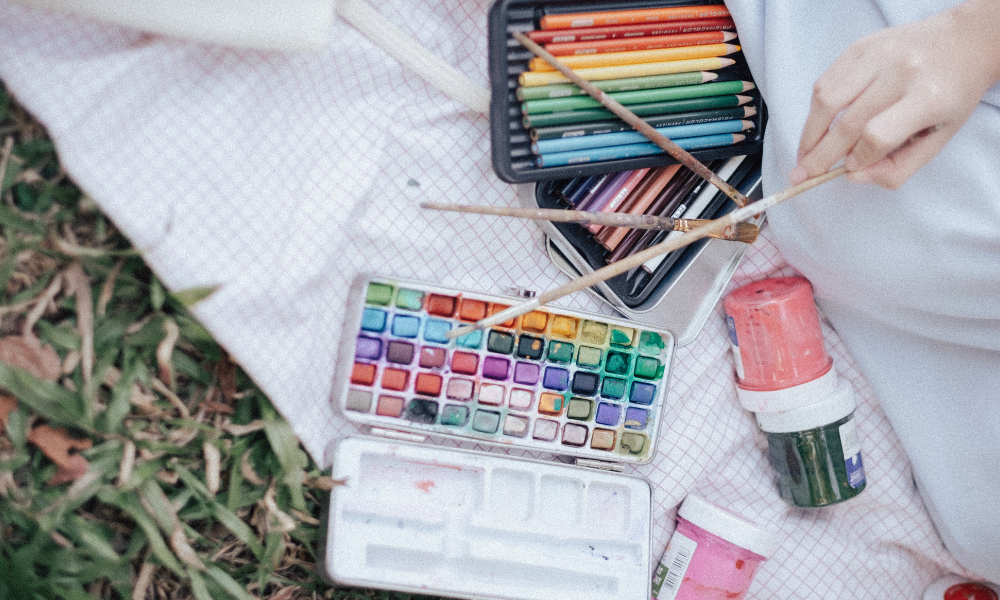
Getting an online bachelor’s degree in art has many advantages making it worth your time and money. Here are some of the biggest ones:
Flexibility
The flexibility and convenience of online education allow you to study at your own pace. This comes without the constraints of a traditional classroom setting. It means you can balance your education with other commitments, such as work or family responsibilities.
Diversity
Online art programs often provide access to a wider range of course options and resources. With just a few clicks, you can explore different artistic mediums, techniques, and styles from various cultures. This exposure to diverse perspectives can broaden your artistic horizons. It also enhances your creative abilities.
Networking
Online learning allows you to connect with fellow online students and professionals from around the world. You can receive useful feedback and insights from virtual art galleries and discussion boards. Collaborative projects are also helpful. This fosters a sense of camaraderie and expands your professional network.
Affordability
Pursuing an online bachelor’s degree in art can be more affordable than a traditional on-campus program. Online schools often have tuition prices that are similar to or lower than traditional colleges. Online programs also eliminate the need for additional expenses. These include commuting, housing, and parking, making it a cost-effective option for those on a tight budget.
Accreditation and Reputation of Online Art Degree Programs
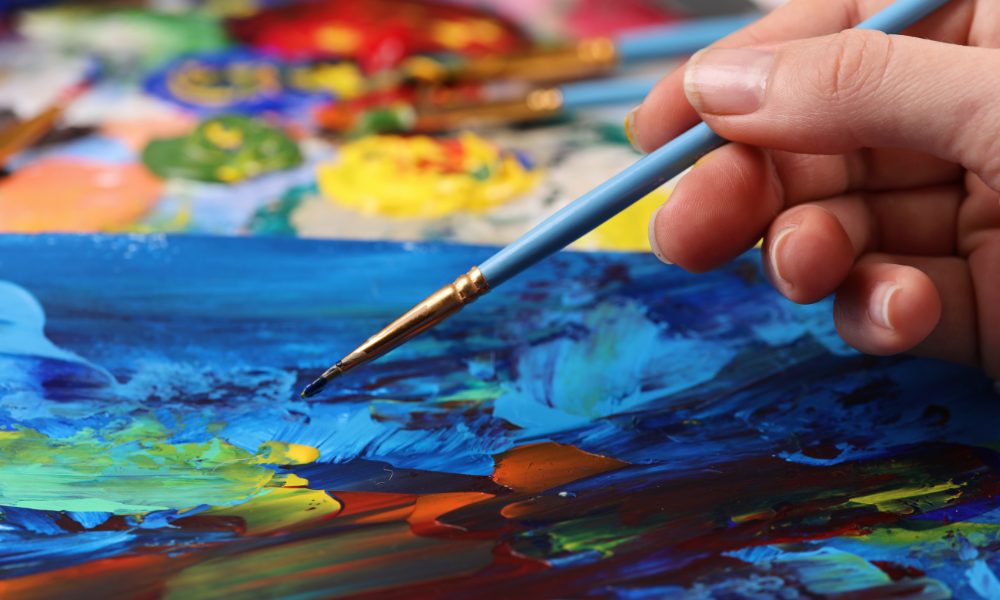
If you want to get an online bachelor’s degree in art, you should think about the program’s accreditation and reputation. Accreditation means the institution and its programs meet specific quality and effectiveness standards. When choosing an online program, make sure it is accredited by a recognized agency. This ensures that employers and educational institutions will recognize your degree.
The reputation of the online art degree program is also important. Research the program’s history, faculty, and alumni to gain insights into its reputation within the art community. Look for testimonials and reviews from current and former online students to get a sense of the program’s strengths and weaknesses. A strong reputation indicates that the program provides a high-quality education. This can enhance your credibility and employability within the art industry.
Take the time to research and compare different online art degree programs before making a decision. Make sure the program has a good reputation, strong industry connections, and a curriculum that matches your goals. If you choose an accredited art degree program with a good reputation, you can trust that your online bachelor’s degree in art will be valuable. It will be worth your time, effort, and money.
Cost Comparison: Online Versus Traditional Art Degrees

When considering the best online bachelor’s degree in art for you, it is crucial to compare the costs of online programs to traditional art degrees.
Online programs often offer cost advantages such as lower tuition fees and the avoidance of extra expenses. But, we need to think about how financial aid may vary and who qualifies for it.
Research and compare the costs of online art degree programs versus traditional art schools. Consider the overall cost, including tuition fees, textbooks, art supplies, and any additional fees. Look for financial aid options and scholarships available specifically for online students.
While an online degree can offer cost savings, it is important to weigh these savings against potential limitations. These include the lack of access to physical art studios and face-to-face interaction with instructors and peers.
When you compare the costs and benefits of online and traditional art degrees, you can decide which is worth your time and money.
The Flexibility and Convenience of an Online Art School
When looking at costs, it’s also important to think about the flexibility and convenience of online learning. One of the main advantages of pursuing an online degree is the ability to study at your own pace and on your schedule. You can balance your education with work or family responsibilities because of the flexibility of online courses.
Additionally, studying online means you don’t have to travel to a campus, saving time and money. You can access course materials and complete assignments online, from home, or anywhere with the internet. This means you can tailor your studies to suit your individual needs and preferences.
Though online learning lacks face-to-face interaction, it incorporates virtual online classes and discussion forums. This fosters collaboration and engagement among students. Online students can also use video calls and online platforms to connect with professors and classmates.
At most online art schools, learning is flexible and convenient. So it’s a great option for busy people or those who prefer to learn at their own pace. However, it is important to consider your learning style and determine if this format aligns with your educational goals.
Job Prospects and Career Opportunities for Online Art Graduates

A vital factor when deciding if an online art degree is worthwhile is job prospects after graduation. In the art industry, employers often value talent and practical experience over the type of degree earned. It can be a competitive field.
However, an online bachelor’s degree in art can still open doors to a variety of career paths. Professions like graphic design and web development need a good portfolio and practical skills. By combining talent, technical skills, and an online art degree, you can improve your marketability and succeed. For many of these careers, online classes are all you need to learn essential skills.
Here are 22 excellent careers for those with a bachelor’s in art, including their average yearly salaries. These numbers are based on data from the Bureau of Labor Statistics, Glassdoor.com, ZipRecruiter.com, and Salary.com.
Graphic Designer

$57,990
A graphic designer uses art and technology to convey messages visually. They are visual storytellers who use images, text, and colors to design things like logos, posters, websites, and more. Graphic designers work in various industries, from advertising to publishing. They need a good eye for aesthetics and an understanding of how to communicate ideas effectively.
Graphic Designers select fonts, arrange layouts, and choose colors to create compelling visuals. They might use software like Adobe Photoshop or Illustrator to bring their ideas to life. Graphic designers play a crucial role in making products and messages visually appealing and easy to understand.
Art Illustrator

$69,870
An art illustrator is a skilled artist who specializes in creating detailed and captivating images to accompany text. This text is often found in books, magazines, or digital media. These illustrations enhance the content’s meaning and engage the audience. Illustrators use various techniques, such as drawing, painting, or digital tools, to bring stories and concepts to life.
Illustrators work closely with authors, editors, and publishers. Art illustrators need a strong sense of creativity, attention to detail, and a deep understanding of storytelling. Their goal is to effectively convey ideas through their artwork.
Art Teacher

$93,440
An art teacher is an educator who imparts knowledge and skills in the field of visual arts. They work in schools, colleges, or community centers. They teach students various artistic techniques and principles. These teachers foster creativity and help students develop their artistic abilities. They instruct in areas such as drawing, painting, sculpture, and digital media.
Art teachers also teach students about art history, famous artists, and artistic movements. They help students grow artistically by guiding, giving feedback, and organizing creative projects. Art teachers play a crucial role in nurturing young talents and fostering art appreciation.
Gallery Assistant

$38,000
A gallery assistant works in an art gallery, helping with its day-to-day operations. They play a vital role in connecting art enthusiasts with the works on display. They greet visitors, share information about artworks and artists, and keep the gallery secure and clean. They also assist in setting up exhibitions, handling sales, and managing administrative tasks.
Gallery assistants bridge the gap between artists, art lovers, and the gallery itself. They help to make the art-viewing experience enjoyable and informative. Being a gallery assistant requires a passion for art, good communication skills, and an understanding of the art world. It is an essential role in promoting and preserving artistic culture.
Art Therapist

$82,796
An art therapist is a professional who combines the healing power of art with psychological therapy. They help people express themselves through creative activities, like art, writing, or music. These include painting, drawing, and sculpture. This therapeutic approach can aid those struggling with emotional or mental health issues.
Art therapists create a safe and non-judgmental space for clients to explore and communicate their emotions. They analyze the artworks together. They use them to understand and address psychological challenges. Art therapy helps people deal with their inner struggles, so art therapists are important in mental health.
Art Museum Educator

$46,333
An art museum educator facilitates meaningful experiences for museum visitors. They serve as guides and interpreters. They help people understand and appreciate the art on display. They plan tours, workshops, and programs that on art history, culture, and personal experiences.
An art museum educator’s goal is to make the museum a dynamic and educational place. They encourage critical thinking, curiosity, and engagement with the artworks. They inspire a deeper understanding of art and its context through discussions and activities. They play a vital role in making art accessible and enjoyable, fostering a lifelong love for art and learning.
Special Effects Artist
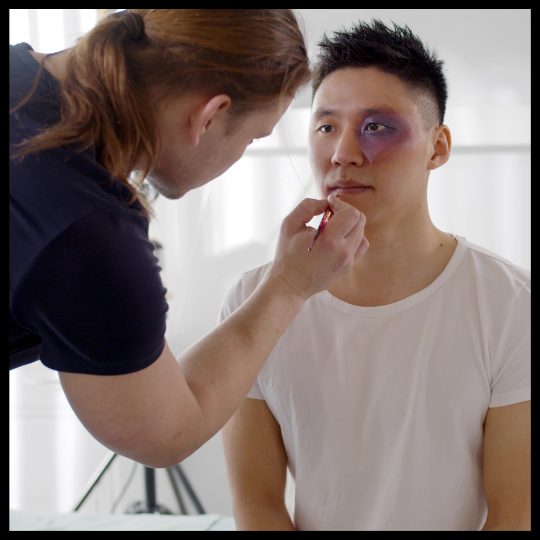
$98,950
A special effects artist, often called an “SFX artist,” brings the extraordinary to life in film, television, and theater. They combine art skills with advanced technology to create amazing visual effects. These effects can range from realistic explosions and creatures to otherworldly landscapes.
Special effects artists use techniques such as CGI, animatronics, and makeup to create the illusion of the impossible. They work with directors and production teams to ensure that the visual elements seamlessly blend with the storyline. Their goal is to enhance the overall viewing experience. Special effects artists are essential in making the fantastical a cinematic reality.
Art Director

$105,180
An art director is a creative leader responsible for the visual style and overall design of various projects. These include advertisements, films, or publications. They work together with designers, illustrators, photographers, and writers. They aim to express a particular artistic idea. Art directors ensure that all elements – from images to typography – align with the project’s goals and message. They make critical decisions about color schemes, layout, and composition. This ultimately shapes the project’s aesthetic.
Art directors need a keen eye for detail and a deep understanding of visual storytelling. They play a pivotal role in crafting compelling and visually engaging content that resonates with the audience.
Fine Artist
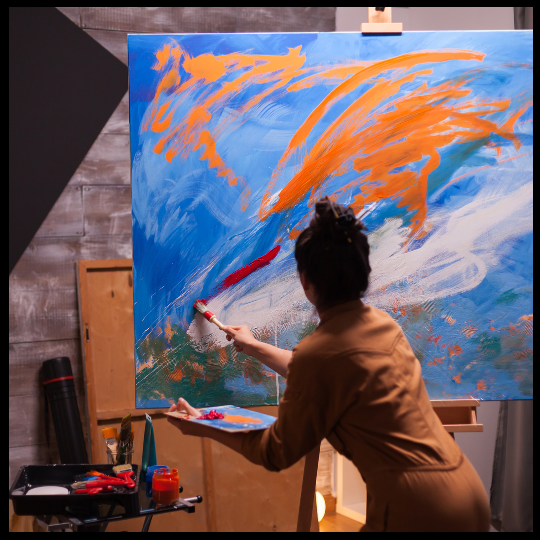
$53,140
Fine artists express themselves through various art forms, like painting, sculpture, or drawing. They are known for their unique and personal artistic vision. They create works that often evoke emotions, convey ideas, or reflect their observations of the world.
Fine artists use a variety of techniques, styles, and mediums to bring their concepts to life. They often showcase their creations in galleries, museums, or other art spaces. These artists follow their inner passions and imagination. They strive to create art that is not just visually appealing but also thought-provoking. Their goal is to make a lasting impact on the viewer and contribute to the rich tapestry of human culture. There are many opportunities to pursue an online fine arts degree.
Multimedia Artist

$54,430
Multimedia artists are versatile creative professionals. They blend different digital and traditional mediums to craft engaging visual experiences. These artists use a combination of technology, animation, audio, and graphics to convey ideas and stories. They work on diverse projects like video games, animations, interactive websites, and more.
Multimedia artists have a strong grasp of both artistic and technological aspects. They often use software like Adobe Creative Suite or 3D modeling tools. They aim to captivate and immerse their audience by delivering rich, dynamic, and interactive content. This engages multiple senses, making them pivotal in the evolving world of digital media and entertainment.
Creative Director

$157,554
A creative director is a visionary leader in the world of design, advertising, or entertainment. They oversee creative projects, guiding teams of designers, writers, and artists. Their goal is to produce compelling and cohesive work. Creative directors make sure the final product matches the client’s goals and brand identity. They play a crucial role in determining the project’s appearance and message. They make decisions about concepts, styles, and presentation.
The creative director’s role is to inspire and motivate the creative team. They foster an environment of innovation and excellence. These art professionals play a pivotal role in delivering impactful and captivating content.
Art Conservator
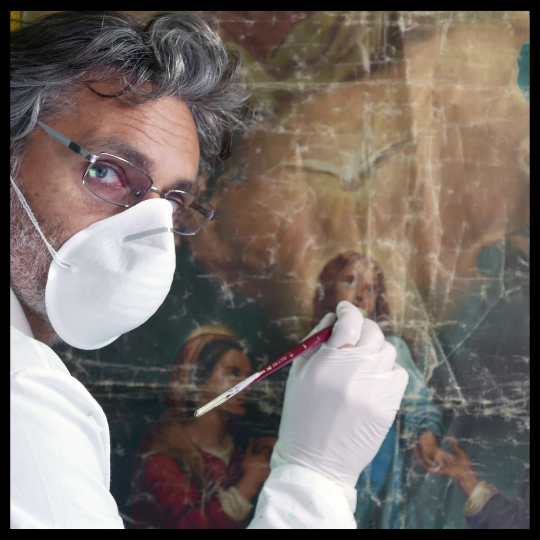
$47,791
An art conservator is a specialist in art history. They are dedicated to preserving and restoring artworks. They play a crucial role in maintaining the cultural and historical heritage of artistic creations. Art conservators assess the condition of artworks, identifying damage or deterioration. They use scientific methods to repair and protect paintings, sculptures, and other artifacts. This involves tasks like cleaning, repairing, and selecting appropriate conservation techniques.
The goal of an art conservator is to ensure that the artwork remains as close to its original state as possible, safeguarding it for future generations. Art conservators are deeply involved in art history. And they strive to bridge the gap between art and science, working to preserve our cultural treasures.
Art Administrator

$48,690
An art administrator is an essential figure behind the scenes of art organizations and galleries. They manage the logistical and organizational aspects. They ensure smooth operations and promote art-related activities. Art administrators handle budgets, coordinate events, and oversee marketing and outreach efforts. They schedule exhibitions, work with artists, and build relationships with donors and patrons. They also play a vital role in shaping the vision and goals of an art institution.
Art administrators bring together the artistic and administrative sides of the art world. They allow artists to focus on their creative work while ensuring the public can access and engage with art in a structured manner.
Set Designer

$68,490
A set designer crafts the visual environment of theatrical, film, or television productions. They transform the written script into a tangible and captivating stage or set. Set designers consider elements like architecture, props, lighting, and color. They create an immersive backdrop that enhances the story. They collaborate with directors and production teams to ensure the set aligns with the narrative.
Set designers have a keen eye for detail. They understand storytelling well and can create 3D spaces from ideas. They play a pivotal role in bringing fictional worlds to life on stage and screen.
Art Buyer

$71,963
An art buyer acquires artworks for personal enjoyment or investment purposes. They navigate the art market, attending galleries, auctions, and art fairs to find pieces that resonate with their taste and budget. Art buyers may seek works by emerging artists or established masters. They evaluate art’s quality, provenance, and potential value, and make informed purchase decisions.
Art buyers support artists by investing in their work, and they contribute to the art world’s economy and evolution. Art buyers play a crucial role in the art ecosystem, shaping collections and cultural trends.
Art Historian

$40,280
An art historian specializes in art history. They study and analyze art from the past. They trace its evolution and understand its cultural significance. They delve into art history, context, and aesthetic qualities of artworks, and explore the lives and influences of artists. Art historians research and document various artistic movements, styles, and periods. This includes art from ancient to contemporary. They contribute to a deeper understanding of human history, culture, and creativity through their work.
Art historians often publish research, curate exhibitions, and educate others. They play a crucial role in preserving and sharing our artistic heritage. They make art accessible and meaningful to a broader audience.
Visual Merchandiser

$43,081
A visual merchandiser designs and arranges retail displays to attract and engage customers. They use their artistic skills to create eye-catching arrangements of products. They use elements like color, lighting, and signage to communicate a brand’s message and style.
Visual merchandisers ensure that products are showcased in an appealing and logical manner. Their goal is to enhance the shopping experience. They also stay updated on industry trends and consumer behavior to adapt displays accordingly. This role involves a blend of artistic flair and business acumen. Visual merchandisers help stores succeed by attracting customers to explore, and shop.
User Interface (UI) Designer

$101,740
A UI designer creates the visual elements and layout of digital interfaces, such as websites, mobile apps, and software. Their primary focus is on crafting a user-friendly and aesthetically pleasing experience. They use their artistic skills to design the appearance of buttons, menus, and other interactive elements. Their goal is to ensure they are intuitive and visually appealing interfaces. They also consider user flow and functionality, ensuring that the interface is easy to navigate.
UI designers collaborate with UX designers to provide a seamless and enjoyable experience for users. Their work plays a crucial role in making digital products both functional and visually engaging.
User Experience (UX) Designer

$99,105
A UX designer focuses on enhancing the overall experience users have with digital products, such as websites and apps. Their primary goal is to make these products intuitive, efficient, and enjoyable to use. UX designers research user behaviors and preferences to inform their design decisions. They create wireframes, prototypes, and user flows to ensure a seamless and logical user journey.
UX designers collaborate with UI designers to merge functionality with a visually appealing design. UX designers are essential for making technology user-friendly. They reduce frustration and increase user satisfaction. This ultimately contributes to the success of digital products.
Production Designer

$54,468
A production designer is a key creative professional in the world of filmmaking and theater. They are responsible for shaping the visual aspects of a production, including sets, costumes, and props. They work closely with the director and other department heads. The production designer brings the script to life by designing and overseeing the construction of sets. They also select locations and ensure that the visual elements align with the project’s artistic vision. This role demands a keen eye for detail, creativity, and an ability to translate abstract ideas into tangible environments.
Production designers play a vital role in setting the mood and atmosphere of a production. This makes them integral to the storytelling process. Their work enhances the overall visual experience, making stories more compelling and believable.
Art Fabricator
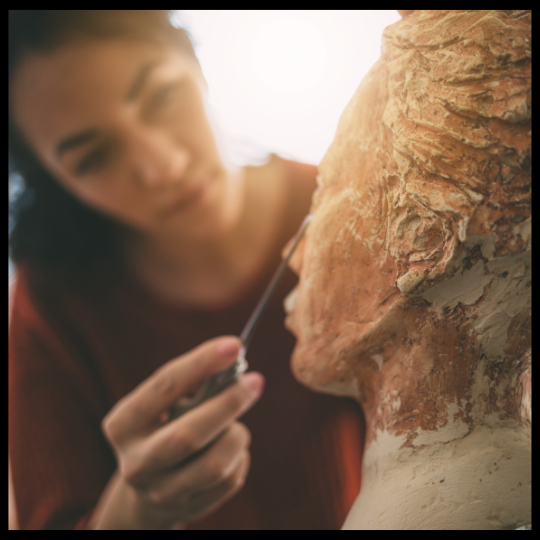
$53,510
An art fabricator is a creative builder. They take ideas from artists and turn them into real artworks. This job involves using different materials, like metal, wood, or even glass, to bring art to life. Art fabricators use their hands and tools to shape and put things together. They work closely with artists to make sure the final piece looks just like the artist’s vision.
Art fabricators need both artistic skills and technical know-how. Art fabricators create amazing sculptures, installations, and more. They help artists share their creativity with the world, making imagination become a reality.
Art Librarian

$59,883
An art librarian is a knowledgeable custodian of artistic information and resources. Their role extends beyond traditional libraries, focusing on art-related materials. They collect and take care of art books, journals, images, and other reference materials. Art librarians assist patrons, including students, researchers, and art enthusiasts. They help people locate and utilize these resources for research or personal enrichment. They are well-versed in art history, cataloging, and information retrieval.
Art librarians also often contribute to the preservation and digitization of valuable art records. They are vital in facilitating access to art knowledge and aiding in scholarly pursuits within the realm of visual arts and culture.
Closing Thoughts on Online Art Schools
The decision to pursue an online art school requires careful consideration. The value of an online degree may vary from traditional programs. This is especially true for those who want in-person instruction. However, online art schools still have benefits for prospective students.
Art-related careers depend on talent, experience, and a strong portfolio for good job opportunities. However, an online degree can improve your job prospects and open up more career options.
Ultimately, the decision to pursue an online art degree is a personal one. Consider your goals, resources, and dedication to the field. By making an informed decision, you can embark on a fulfilling and rewarding art career.
